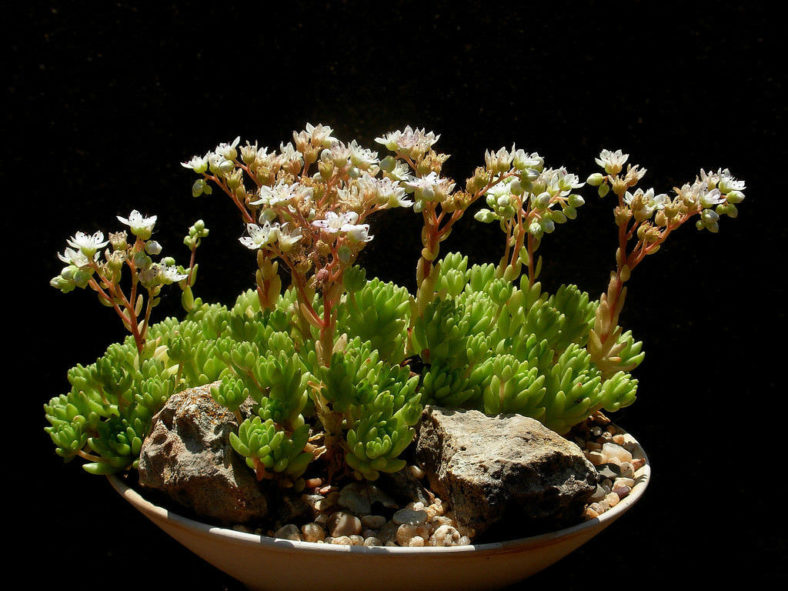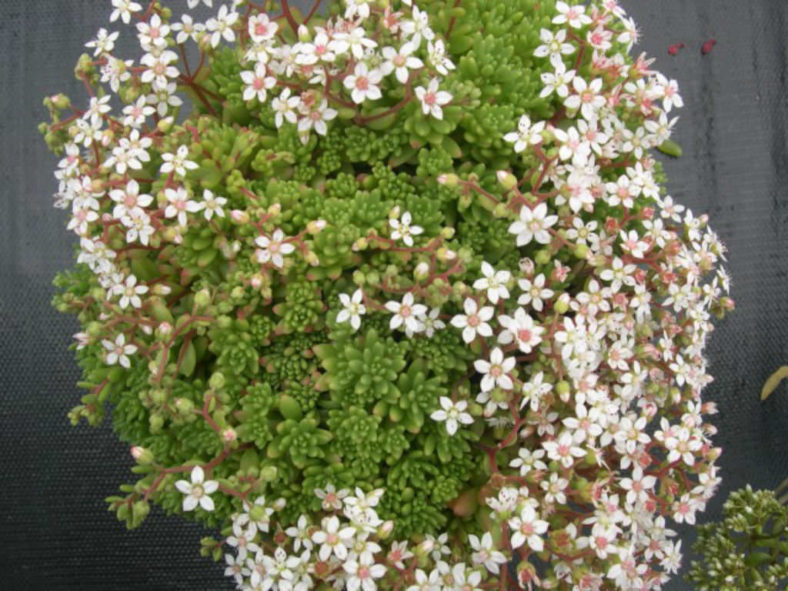Scientific Name
Sedum hirsutum All.
Common Name(s)
Hairy Stonecrop
Synonym(s)
Leucosedum hirsutum, Oreosedum hirsutum, Rosularia hirsuta
Scientific Classification
Family: Crassulaceae
Subfamily: Sempervivoideae
Tribe: Sedeae
Genus: Sedum
Etymology
The specific epithet "hirsutum" (pronounced "her-SOO-tum") means "shaggy, bristly; hairy, hirsute" and refers to the hairy foliage of this species.
Origin
Sedum hirsutum is native to southwestern Europe (Portugal, Spain, France, Italy) and northwestern Africa (Morocco).
Description
Sedum hirsutum is a low-growing succulent with thin stolons, each with a terminal, rooting rosette of small, fleshy leaves densely covered with short, soft hair. It usually forms tufts. The stolons can grow up to 2.4 inches (6 cm) long, while the rosettes can reach a diameter of 1.6 inches (4 cm). The leaves are light green, not very sticky, and flattened on the upper surface, measuring up to 0.6 inches (1.5 cm) in length.
The flowers are star-shaped, usually 5-merous, white or pinkish, and appear in few-flowered clusters on short stalks in summer.

Subspecies of Sedum hirsutum
- Sedum hirsutum subsp. baeticum
- Sedum hirsutum subsp. hirsutum
How to Grow and Care for Sedum hirsutum
Hardiness: USDA hardiness zones 8b to 9b: from 15°F (-9.4°C) to 30°F (-1.1°C).
When growing Sedums, keep in mind that these plants need very little attention. They will thrive in conditions where many other plants thrive, but also do just as well in less hospitable areas. They are ideal for that part of your yard that gets too much sun or too little water, making it difficult for other plants to grow. Sedum is commonly called Stonecrop because many gardeners joke that only stones need less care and live longer.
Sedum is easily planted. For shorter varieties, simply laying the plant on the ground where you want it to grow is usually enough to get started. They will send out roots from wherever the stem touches the ground and the root itself. If you want to ensure the plant starts there, add a very thin layer of soil covering.
You can break off one of the stems for taller varieties and push it into the ground where you want to grow it. The stem will root very easily, and a new plant will be established in a season or two.
Learn more at How to Grow and Care for Sedum.
Links
- Back to genus Sedum
- Succupedia: Browse succulents by Scientific Name, Common Name, Genus, Family, USDA Hardiness Zone, Origin, or cacti by Genus
Photo Gallery
Click on a photo to see a larger version.


